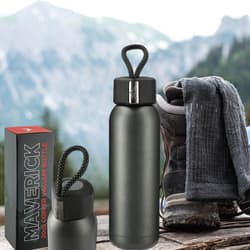Meet your not-for-profit goals with our Year-End Fundraising Guide

For not-for-profit organisations, the end of the year is the most crucial period for their operations. Their survival depends on this giving season with 50% of the annual donations coming in during the last three months of the year. December is undoubtedly the most wonderful time of the year with 30% of the donations coming in during the final month.
How can not-for-profits take advantage of this generous season? Here are ways to utilize the season to help meet and even exceed donation goals.
1. Review the previous year’s year-end fundraising campaign
To know what will work this year, not-for-profits should look back on last year’s fundraising campaign. When developing this year’s campaign, it is important to know:
- What was successful in last year’s EOY fundraising campaign?
- The not-so-successful parts?
- How much funds did you raise? Did you meet your goals?
- How did people react to the theme of last year’s campaign?
- What strategies made a difference (including communication channels, social media and marketing strategies, and promotions)?
- How did your fundraising giveaways contribute to the campaign?
2. Set SMART goals
Now that you’ve taken stock of what you did last year and how you can improve this year, it’s time to set goals and benchmarks. Not just any goals but SMART goals - specific, measurable, achievable, relevant, and time-bound. Here are some metrics to consider when setting goals:
- Fundraising: how much funds will be raised, campaign expenses and ROI, promo giveaway spending, old donor retention, new donor acquisition, and various cash flow items
- Event: event expenses and ROI, venue size, estimated and expected attendees, event promotions, suppliers, and event merchandise
- Marketing & donor outreach: email list size, social media following, click-through rates for all channels… etc.
3. Brainstorm a new campaign theme for this year
Out with the old, and in with the new. It’s time to brainstorm a new campaign theme for this year. This new theme should reflect in the messaging, branding, and promo merchandise, which you will use throughout the campaign.
To create the perfect campaign theme, get to know your ideal donor persona and create the theme around them. Once you’ve developed a theme, gather your donors’ insights and revise the campaign accordingly.
4. Design your marketing collateral
Once you’ve finalised your end-of-year campaign theme, it’s time to make sure that all your marketing collateral pieces are uniform and reflect the theme’s branding, values, and messaging.
For example, your promo merchandise and giveaways should follow the theme colours and should resonate with your messaging and theme.
Take a page from the United Nations. One of the reasons why their promo merchandise sells so well is that they are uniform and convey their message well. Here are some examples of their campaigns:

Even though there are 17 Sustainable Development Goals, the above examples still manage to resonate with each other while also transmitting their messaging clearly, making it a successful promo merchandise line.
5. Time to make the year-end ask
Now that you’ve finalised the campaign, it’s time to get yourself out there through various communication channels. Here are the different ways you can ask for donations:
- Social media
- Emails
- Phone calls
- Mails
- In-person meetings
- Events
- Website
Choose the channels that your ideal donor would prefer. If your target is mostly the voracious technology-consuming generation (Millennials to Gen Zs), choose social media channels, emails, and events. Otherwise, you could opt for mails and phone calls for older generations.
6. Double down on the follow through
Appealing for donations is not a one-and-done thing. You need to consistently follow through but not to the point of being annoying. It is said that a ratio of 5 reach outs to 1 person is recommended. It still varies on the target audience so do what you think is best. Don’t forget to make your follow-up appeals in various channels to avoid being overkill.
It is important to keep doing this until the very last day of the year as 12% of the total giving of the year happens in the last three days of the year.
7. Express gratitude to your donors
After the campaign, don’t forget to appreciate your donors. Thanking them guarantees that the donor will come back and donate again. They are also more likely to spread the word about your organisation to their friends and family.
There are several ways you can thank them. You can choose to send them a personalised message through email or snail mail or you can also send them a thank you gift since who wouldn’t want to receive a gift after a good deed?



8. Take stock of results
The only way you’ll ever know if an end-of-year campaign is successful is through measuring and analysing the metrics. Ask your team these questions:
- Did the campaign meet its KPIs?
- Was it able to meet the goals?
- Which strategy was successful and which wasn’t?
Upon reviewing the data with your team, reflect on the key takeaways of this end-of-year campaign and what aspects of it can you pass over to the next end-of-year campaign. The data, findings, and notes during this campaign can help you plan next year’s campaign easily.
Need help with your end-of-year fundraising campaign?
If you are looking for a promotional products partner for this year’s campaign, you’ve come to the right place! If you want unique promo merchandise or giveaway ideas, fill out this form and will get back to you.


